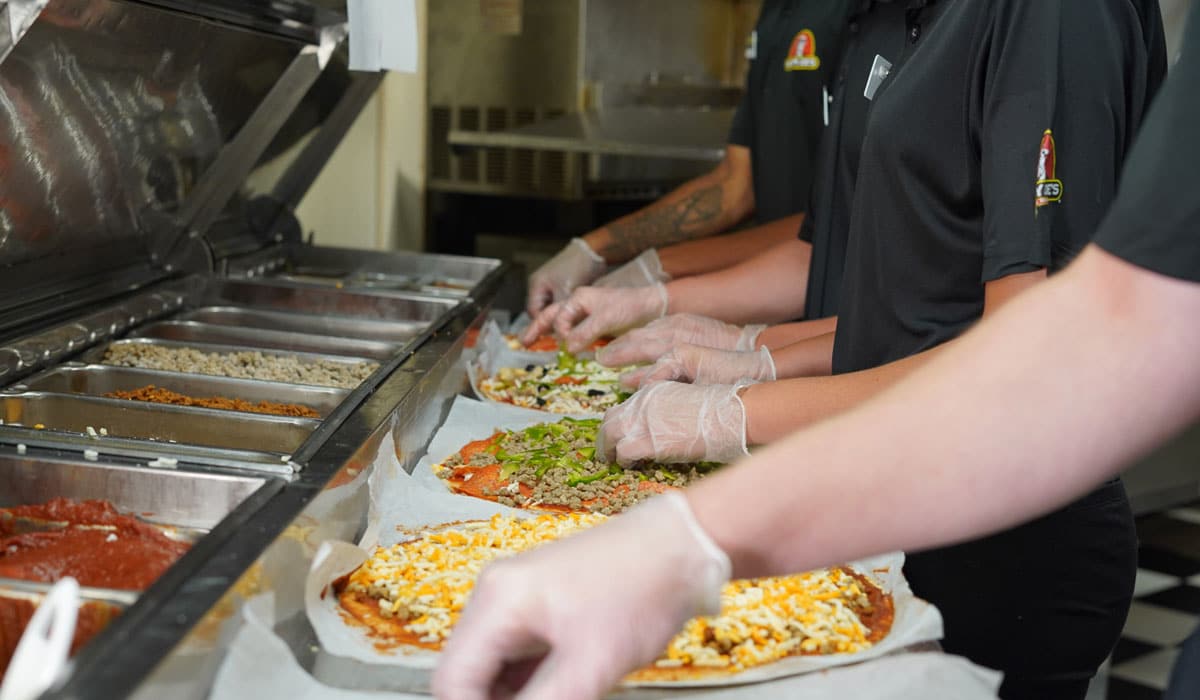The statistics surrounding foodborne illness demonstrate the impact on each of us as well as our families, schools, and communities. The CDC estimates one in six people will get a foodborne illness in the next year. We are often inundated with news of the rare outbreaks, e. Coli, Salmonella, Listeria, etc. This is, arguably, because of the recalls, consumer reaction, and subsequent litigation that results from these is headline-worthy. We have, however, historically ignored the No. 1 foodborne illness culprit, norovirus. The ongoing labor crisis, advancements in clinical diagnostics, coupled with advancements in automation technology may make the next two years ripe for implementation of strategies to reduce norovirus in our food systems.
Norovirus season is coming.
According to scholarly sources, norovirus and the assorted gastroenteritis (commonly mistaken for stomach flu) has a “season” in the U.S. between October and April, with peaks being in the February and March season (Royhem, 2009). Seasonality is can be attributed to three primary factors.
- Their appearance and disappearance,
- The environmental changes
- Host-behavioral changes
While we are all inundated with the lack of knowledge surrounding the appearance and disappearance, point one above, and how environment impacts disease transmission and associated burden on the population, we for the most part understand item 3. In the winter, we are indoors more often, are exposed to more humans, and therefore the shedding, contraction, and shedding cycle is working overtime. Norovirus, like COVID-19, also seems to prey on humans when we are receiving less vitamin D.
Additionally, climate change appears to be changing the way pathogens behave and develop, which may lead to longer seasons of norovirus in the future. We can add noro to the list of other pathogens who are, in the words of Dr. Goldblum, demonstrating nature’s ability to “find a way.”
How could this impact my restaurant?
Per the CDC, restaurants are the most common source of norovirus outbreaks, with a single outbreak potentially lasting weeks or months (CDC, 2020). Further, studies have shown that bare hand contact with food is responsible for most restaurant-associated norovirus outbreaks (Marcin, 2018). As a restaurant operator, it is a bad practice to be on the supplier end of these outbreaks; delivering a deficit to your customer’s health related quality of life days (HRQOL—a metric used in public health) is generally bad for business.
Restaurants are the leading cause of the leading foodborne illness in the US, norovirus (CDC)
From a macro perspective, if one in six gets foodborne illness per year, and most of this is noro-related. Before they reach the age of five, one in 14 children will visit the hospital emergency room due to norovirus (NFID, 2022). Given this prevalence, odds are someone in your immediate family has had reduced quality of life due to norovirus in the past year. Further, odds are they got the pathogen from a restaurant, from a human who handled their food. Only 1 percent of norovirus is from cruise ships, which is disproportionate to the percent of media coverage.
Why does this matter now?
How much have you spent on training employees to wash hands or wear gloves when handling food (see also, 50 percent of gloves are contaminated with fecal matter)? When the front-line employee leaves in 3-6 (days, months), you have to retrain someone who will, again using the odds, forget what they were trained to do, and revert to handling food with their cell phone tainted bare digits. According to the CDC, only one in four workers washed their hands after preparing raw animal products or handling dirty equipment, and only one in 10 workers washed their hands after touching their face or body.
Virus and pathogen testing has become less expensive due to pandemic-associated investments and scaling. This means more people have access to a multiple pathogen test (to determine root cause of illness) than ever before. As we enter norovirus season, you can prepare for more cases and outbreaks to be identified and ultimately tracked back to the source.
In summary, the employees we hire, the gloves we provide, and the training we give them is likely to fail. Plus, we are facing a crippling labor crisis for restaurant help. This creates the perfect primordial ooze that creates innovation and drives efficiencies. Processes that required a human (that you can’t hire) to handle food in the back of house that require little skill can be modified to incorporate artificial intelligence and automation. Perhaps now is the time to build upon the idea of fewer employees are likely to be in your restaurant in the future and should be part of a forward thinking, defensive plan to assist bottom line and mitigate health risks.
So while we don’t talk about Noro now, expect (and perhaps embrace) more discussion in the future.
Dr. Nathan Libbey is the Director of Client Success at robochef, Inc, a food automation company in Libertyville, Illinois. Nathan has spent the past 20 years in a variety of leadership roles in the food space from last mile, to retail, from Global Fortune 100 firms to food safety startups. Dr. Libbey has a BA from the University of Wisconsin, as well as a Masters in Regulatory Affairs of Food Industries and Doctor of Law and Policy from Northeastern University, Boston. Nathan also serves on various non-profit boards, teaches Business at Aurora University, and has been featured in college textbooks, food industry journals, and has presented his research at numerous food safety and public health conferences.












